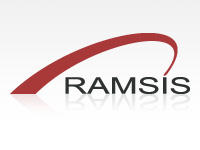As today’s ships and platforms become larger and more sophisticated – millions of parts, multiple disciplines, hundreds of workers, numerous partners and suppliers, multiple sites – shipyards must improve their manufacturing efficiency to remain competitive. It all begins with efficient production planning. Shipbuilders face the daunting task of transforming the engineering design information into an optimized set of manufacturing assemblies and then define and validate the associated production planning to ensure it is optimized for their specific shipyard.
The Optimized Production For Sea Industry Solution Experience, powered by the 3DEXPERIENCE® platform, enables shipyards to perform manufacturing assembly definition, discipline-specific work preparation, process planning, interactive 3D work instructions, as well as 3D simulation and validation of manufacturing plans to help optimize production. With Optimized Production For Sea, shipbuilders can streamline their production planning activities, saving considerable work hours and reducing costs, while improving production quality.
Optimized Production For Sea delivers significant advantages based on the tight integration between design and manufacturing provided by the 3DEXPERIENCE platform. This helps ensure manufactured products correctly adhere to design specifications, which reduces the risk of errors and time-consuming, costly rework.
Shipyards can simulate the process plan, test for manufacturability and ergonomics, and eventually make adjustments before production starts. Optimized Production For Sea automatically generates manufacturing features, which eliminates manufacturing planners’ time-consuming manual work preparation. It also delivers the ability to create interactive 3D work instructions aimed at improving shop floor workers’ comprehension of the manufacturing and assembly sequence. Shipbuilders also have dedicated tools that generate arc-welding machine instructions from the manufacturing planning and that simulate them for optimum positioning. Moreover, as shipbuilding involves an extended network of partners and suppliers, providing them with access to the3DEXPERIENCE platform allows them to see the manufacturing planning and corresponding design information, improving their efficiency as well.
Discover the benefits of Optimized Production For Sea
- Improved productivity thanks to tight engineering/production integration and effective change management
- Improved production quality through 3D simulation of production plans
- Accelerated time to market and reduced cost with rule-driven automation of assembly planning and work preparation
- Fewer errors and less costly rework thanks to interactive 3D work instructions
- Faster time to market and improved production quality through automation and integration of machine and robots with the manufacturing process
- Optimized use of shipyard resources
- Efficient ecosystem collaboration











